Key Takeaways
- Attract top talent by offering competitive salaries, strong employer branding, and opportunities for career growth.
- Retain experienced professionals with a positive work culture, leadership support, and work-life balance initiatives.
- Ensure long-term success by investing in employee development, engagement programs, and retention strategies.
In today’s fast-paced and highly competitive business environment, hiring experienced professionals has become a strategic priority for organizations seeking sustainable growth and long-term success.
Experienced professionals bring a wealth of industry knowledge, technical expertise, and leadership capabilities that can drive innovation, improve operational efficiency, and enhance business performance.
Unlike entry-level hires who require extensive training and mentoring, seasoned professionals can quickly adapt to company objectives, contribute meaningful insights, and lead teams with confidence.

However, attracting and retaining top-level talent is no easy task.
The global job market is evolving rapidly, and skilled professionals have more career options than ever before.
Organizations not only compete with industry peers but also with startups, multinational corporations, and remote-first companies that offer lucrative opportunities, competitive compensation, and flexible work arrangements.
Failing to attract the right professionals can result in skill gaps, reduced productivity, and increased turnover, which can significantly impact a company’s ability to scale and remain competitive.
To secure the best talent, businesses must go beyond traditional recruitment methods and adopt innovative hiring strategies that align with evolving workforce expectations.
Offering a strong employer brand, competitive salary packages, and a positive workplace culture are essential elements in drawing high-caliber professionals.
Additionally, companies must prioritize retention strategies by fostering employee engagement, providing career growth opportunities, and ensuring that experienced professionals feel valued and motivated within the organization.
This article explores proven strategies for attracting and retaining top-level talent, helping businesses build a strong workforce that drives long-term success.
From leveraging employer branding to optimizing recruitment processes and implementing effective retention initiatives, this guide will provide actionable insights to help organizations secure the expertise they need to thrive in a competitive marketplace.
Before we venture further into this article, we would like to share who we are and what we do.
About 9cv9
9cv9 is a business tech startup based in Singapore and Asia, with a strong presence all over the world.
With over nine years of startup and business experience, and being highly involved in connecting with thousands of companies and startups, the 9cv9 team has listed some important learning points in this overview of Hiring Experienced Professionals: Strategies for Attracting and Retaining Top-Level Talent.
If your company needs recruitment and headhunting services to hire top-quality employees, you can use 9cv9 headhunting and recruitment services to hire top talents and candidates. Find out more here, or send over an email to [email protected].
Or just post 1 free job posting here at 9cv9 Hiring Portal in under 10 minutes.
Hiring Experienced Professionals: Strategies for Attracting and Retaining Top-Level Talent
- Understanding the Value of Experienced Professionals
- Strategies for Attracting Top-Level Talent
- Strategies for Retaining Experienced Professionals
1. Understanding the Value of Experienced Professionals
Hiring experienced professionals is a critical investment for organizations aiming to drive business growth, innovation, and operational efficiency. Unlike entry-level employees, seasoned professionals bring specialized knowledge, industry insights, and leadership capabilities that can significantly impact an organization’s success. This section explores the key benefits of hiring experienced professionals and how their expertise contributes to a company’s long-term goals.
How Experienced Professionals Contribute to Business Success
1. Extensive Industry Knowledge and Expertise
- Experienced professionals possess deep domain knowledge, enabling them to navigate complex business challenges effectively.
- They have a thorough understanding of market trends, industry regulations, and best practices, helping organizations make informed decisions.
- Their expertise minimizes trial-and-error approaches, reducing costly mistakes and accelerating project timelines.
- Example: A senior financial analyst with a decade of experience in risk management can identify financial vulnerabilities faster than a junior hire, ensuring the company avoids potential losses.
2. Faster Adaptation and Productivity
- Unlike entry-level employees who require extensive onboarding and training, experienced professionals can integrate into the company’s workflow quickly.
- They already possess the necessary technical and soft skills, reducing the time needed for skill development.
- Their ability to work independently and take initiative ensures immediate contributions to business operations.
- Example: A software engineer with years of experience in AI development can immediately start optimizing machine learning models without requiring months of training.
3. Strong Leadership and Mentorship Capabilities
- Senior professionals often take on leadership roles, guiding teams and mentoring junior employees.
- Their experience in managing projects, handling crises, and making strategic decisions strengthens organizational stability.
- They play a crucial role in knowledge transfer, helping nurture the next generation of talent within the company.
- Example: A marketing director with extensive experience in digital campaigns can mentor junior marketers, improving team performance and campaign effectiveness.
4. Enhanced Problem-Solving and Decision-Making Skills
- Experienced professionals have encountered and resolved a wide range of industry-specific challenges.
- They can apply critical thinking and analytical skills to solve problems efficiently.
- Their ability to assess risks, foresee potential obstacles, and implement proactive solutions adds tremendous value to a company.
- Example: A senior supply chain manager can anticipate potential disruptions in logistics and implement contingency plans to avoid delays.
5. Increased Client and Stakeholder Confidence
- Clients and stakeholders often feel more confident working with professionals who have a proven track record.
- Experienced employees help build trust with key partners, ensuring long-term business relationships.
- Their industry reputation and professional network can attract new opportunities and collaborations for the company.
- Example: A senior consultant with decades of experience in business strategy is more likely to secure high-profile clients than a newcomer.
The Cost-Benefit Analysis of Hiring Experienced Professionals vs. Entry-Level Employees
1. Higher Initial Cost but Greater Long-Term Returns
- Hiring experienced professionals generally comes with higher salary expectations, benefits, and potential signing bonuses.
- However, their ability to deliver immediate results and drive profitability outweighs the initial investment.
- Companies can reduce costs associated with training, onboarding, and high turnover rates common among inexperienced hires.
- Example: A startup that hires an experienced CFO may incur higher upfront costs but benefits from optimized financial strategies that lead to long-term profitability.
2. Lower Turnover and Greater Employee Retention
- Experienced professionals are more likely to stay with a company that provides career growth and leadership opportunities.
- They understand long-term career planning and are less likely to leave for minor incentives, unlike entry-level employees who often switch jobs for small salary increments.
- Investing in experienced professionals helps maintain organizational stability and reduces hiring cycles.
- Example: A senior HR manager with years of experience in employee engagement strategies can implement policies that improve retention rates.
3. Stronger Contribution to Innovation and Business Growth
- Seasoned professionals bring fresh perspectives based on real-world experience, helping organizations stay ahead of competitors.
- They can identify gaps in existing business models and propose innovative solutions that drive expansion.
- Their ability to analyze market opportunities and implement data-driven strategies enhances business agility.
- Example: A veteran product manager with experience in launching successful tech products can guide a company’s R&D team toward market-driven innovation.
Real-World Examples of Companies Thriving with Experienced Talent
1. Apple’s Recruitment of Industry Experts
- Apple has consistently hired experienced professionals from leading tech firms to strengthen its research, design, and product development teams.
- The company’s ability to attract top engineers, designers, and executives has helped it maintain its position as an industry leader.
- Example: The recruitment of seasoned professionals in AI and semiconductor development has allowed Apple to innovate its proprietary chip technology, reducing reliance on external suppliers.
2. Tesla’s Strategic Hiring of Senior Engineers
- Tesla recruits experienced engineers from top automotive and aerospace companies to enhance its electric vehicle (EV) technology.
- The expertise of senior professionals in battery technology, AI, and manufacturing has accelerated Tesla’s advancements in the EV market.
- Example: Hiring former SpaceX engineers helped Tesla develop cutting-edge automation for vehicle production.
3. Amazon’s Focus on Leadership Hiring
- Amazon prioritizes hiring experienced professionals for key leadership roles to ensure operational excellence.
- Its ability to attract senior executives with expertise in logistics, cloud computing, and AI has strengthened its market dominance.
- Example: The appointment of experienced supply chain managers has enabled Amazon to optimize its global logistics network.
Conclusion
Hiring experienced professionals provides organizations with a competitive edge by ensuring faster adaptation, improved leadership, and enhanced decision-making capabilities. While the initial investment may be higher, the long-term benefits far outweigh the costs, leading to greater innovation, increased productivity, and stronger business growth. Companies that recognize the value of seasoned professionals and implement strategic hiring and retention practices will position themselves for long-term success in an increasingly competitive job market.
2. Strategies for Attracting Top-Level Talent
Attracting top-level talent requires more than just posting job openings and waiting for applications to arrive. In today’s competitive job market, skilled professionals have numerous opportunities and high expectations when choosing their next employer. Companies must implement strategic hiring approaches to stand out, engage potential candidates, and position themselves as an employer of choice. This section explores key strategies businesses can use to attract top-tier professionals effectively.
Building a Strong Employer Brand
1. Establish a Positive Company Reputation
- A strong employer brand helps organizations attract high-caliber candidates who align with the company’s values and culture.
- Companies with a well-recognized brand have a competitive edge in recruitment.
- Example: Google and Microsoft attract top talent due to their strong reputations for innovation, employee satisfaction, and career development opportunities.
2. Showcase Company Culture and Values
- Candidates seek workplaces that offer a supportive, inclusive, and value-driven environment.
- Highlight company mission, values, and workplace culture through social media, career pages, and employee testimonials.
- Example: Patagonia attracts environmentally conscious professionals by promoting its sustainability initiatives and corporate social responsibility efforts.
3. Leverage Employee Advocacy
- Encourage current employees to share their experiences on platforms like LinkedIn, Glassdoor, and company blogs.
- Word-of-mouth recommendations from employees enhance credibility and attract skilled professionals.
- Example: HubSpot employees frequently share insights about the company’s flexible work culture, boosting its employer brand.
Offering Competitive Compensation and Benefits
1. Provide Market-Competitive Salaries
- Top-level talent expects compensation that reflects their expertise, experience, and contributions.
- Conduct regular market research to ensure salary packages remain competitive.
- Example: Tech giants like Amazon and Facebook offer competitive base salaries along with stock options to attract senior professionals.
2. Offer Attractive Benefits Beyond Salary
- Comprehensive benefits packages, including health insurance, retirement plans, and wellness programs, enhance job appeal.
- Additional perks like gym memberships, mental health support, and childcare assistance improve work-life balance.
- Example: Netflix offers unlimited paid leave, giving employees flexibility and autonomy over their time.
3. Implement Performance-Based Incentives
- High-performing professionals seek roles where their contributions are rewarded.
- Offer bonuses, stock options, and commission-based structures to attract results-driven candidates.
- Example: Sales-driven companies like Salesforce provide commission-based incentives to motivate top-tier professionals.
Optimizing the Recruitment Process
1. Streamline the Hiring Process
- Lengthy and complicated hiring processes discourage top talent from applying.
- Simplify application procedures, reduce unnecessary interview rounds, and provide timely feedback.
- Example: Tesla’s hiring strategy includes fast-tracked decision-making to secure top engineering talent before competitors.
2. Use AI-Powered Recruitment Tools
- AI-driven hiring platforms help identify and engage top candidates efficiently.
- Leverage applicant tracking systems (ATS) and AI-driven resume screening to find the best-fit professionals.
- Example: Companies like Unilever use AI-powered hiring tools to assess candidate skills and match them with suitable roles.
3. Conduct Personalized Outreach
- Passive candidates (those not actively job-seeking) often require tailored engagement.
- Personalized messages, executive referrals, and targeted job offers can attract high-profile professionals.
- Example: LinkedIn InMail campaigns enable recruiters to send customized messages to top-tier candidates.
Enhancing Employee Growth and Development Opportunities
1. Offer Career Advancement Programs
- Top professionals seek long-term career growth opportunities when choosing an employer.
- Provide leadership training, mentorship programs, and skill development workshops.
- Example: Deloitte’s Leadership Academy helps employees gain managerial and executive skills, attracting ambitious professionals.
2. Support Continuous Learning and Certifications
- Sponsoring professional certifications and higher education programs makes roles more appealing.
- Encourage employees to participate in industry conferences, workshops, and online learning platforms.
- Example: Amazon pays for employees to pursue degrees and certifications through its Career Choice program.
3. Foster Internal Mobility
- High-caliber employees prefer companies that provide opportunities for lateral moves and promotions.
- Implement internal job postings and encourage employees to explore different roles within the organization.
- Example: Google allows employees to apply for internal job rotations to gain diverse experiences.
Leveraging Technology and Digital Platforms
1. Use Social Media for Talent Acquisition
- LinkedIn, Twitter, and industry-specific forums help companies connect with experienced professionals.
- Posting job openings, sharing company achievements, and engaging with potential candidates increases visibility.
- Example: IBM actively recruits tech talent through its LinkedIn presence and industry discussions.
2. Implement AI and Data-Driven Recruitment Strategies
- AI-powered tools analyze candidate profiles and predict job fit, streamlining the hiring process.
- Data-driven hiring helps companies target specific skills and experience levels efficiently.
- Example: AI recruiting software like HireVue enables companies to screen top candidates through automated assessments.
3. Utilize Niche Job Boards and Professional Networks
- Senior professionals often look for opportunities on specialized job boards tailored to their expertise.
- Industry-specific networking events, online forums, and professional associations can be valuable recruitment channels.
- Example: GitHub and Stack Overflow are used to attract experienced software engineers.
Creating a Flexible and Inclusive Work Environment
1. Offer Remote and Hybrid Work Options
- Many top-level professionals prefer flexible work arrangements over rigid office schedules.
- Remote work opportunities help attract talent from diverse geographic locations.
- Example: Companies like Zapier operate as fully remote workplaces, attracting experienced professionals from across the globe.
2. Promote Diversity and Inclusion Initiatives
- A diverse workplace appeals to professionals who value inclusivity and equal opportunities.
- Implement policies that support underrepresented groups and foster a culture of belonging.
- Example: Accenture’s commitment to gender diversity and inclusive hiring has strengthened its reputation as an employer of choice.
3. Support Work-Life Balance
- Offering flexible work hours, mental health support, and vacation policies improves job satisfaction.
- Professionals are more likely to join companies that respect their personal time and well-being.
- Example: Airbnb provides employees with a travel stipend, encouraging work-life balance while promoting the company’s brand.
Conclusion
Attracting top-level talent requires a strategic, multi-faceted approach that extends beyond salary offerings. Companies must build a strong employer brand, optimize recruitment processes, offer career development opportunities, and embrace flexible work arrangements. By investing in these strategies, businesses can position themselves as attractive employers in the eyes of experienced professionals, ensuring long-term organizational growth and success.
3. Strategies for Retaining Experienced Professionals
Retaining experienced professionals is just as critical as attracting them. High-performing employees bring institutional knowledge, leadership skills, and industry expertise that contribute to business growth. However, retaining top-level talent requires more than just a competitive salary. Companies must foster a positive work environment, provide opportunities for professional development, and implement effective retention strategies to ensure long-term employee satisfaction.
This section explores proven strategies to help businesses retain experienced professionals and reduce turnover rates.
Creating a Positive Work Environment
1. Foster a Strong Company Culture
- A workplace with a positive culture encourages employees to stay long-term.
- Promote open communication, inclusivity, and a shared vision to build a cohesive team.
- Example: Google fosters innovation and collaboration through an open work culture, keeping employees engaged.
2. Encourage Transparent Communication
- Open dialogue between leadership and employees builds trust and job satisfaction.
- Implement regular check-ins, feedback sessions, and town hall meetings to address employee concerns.
- Example: Adobe conducts frequent one-on-one meetings to ensure employees feel heard and valued.
3. Recognize and Reward Employee Contributions
- Acknowledging hard work and achievements motivates employees to stay committed.
- Implement peer recognition programs, performance bonuses, and public acknowledgments.
- Example: Salesforce’s “Recognition Hub” allows employees to give and receive praise, boosting morale.
Providing Career Growth and Development Opportunities
1. Offer Leadership and Management Training
- Many experienced professionals seek leadership roles as part of their career progression.
- Provide executive coaching, mentorship programs, and leadership workshops.
- Example: General Electric’s Leadership Development Program helps employees transition into management roles.
2. Support Continuous Learning and Upskilling
- Encourage employees to pursue certifications, attend industry events, and engage in training.
- Provide access to online learning platforms such as Coursera, Udemy, and LinkedIn Learning.
- Example: Amazon’s Career Choice program covers tuition costs for employees seeking further education.
3. Implement Internal Mobility Programs
- Allow employees to explore different roles within the company to prevent stagnation.
- Offer cross-departmental training, job rotations, and internal promotions.
- Example: Microsoft’s internal job board enables employees to apply for new roles within the company.
Enhancing Compensation and Benefits Packages
1. Offer Competitive Salaries and Bonuses
- Regularly benchmark salaries against industry standards to remain competitive.
- Provide performance-based incentives, stock options, and profit-sharing plans.
- Example: Apple offers restricted stock units (RSUs) to senior employees to boost retention.
2. Provide Comprehensive Benefits Packages
- Health insurance, retirement plans, and wellness programs increase job satisfaction.
- Additional benefits like childcare assistance and tuition reimbursement attract long-term employees.
- Example: Facebook offers generous parental leave policies to support employees with families.
3. Implement Retention Bonuses and Long-Term Incentives
- Reward employees for staying with the company through long-term incentives.
- Offer annual retention bonuses, milestone-based rewards, and stock vesting options.
- Example: Amazon provides retention bonuses for key employees in high-demand roles.
Creating a Flexible and Employee-Centric Work Environment
1. Promote Work-Life Balance
- Overworked employees are more likely to leave for companies with healthier work-life integration.
- Offer flexible work hours, wellness programs, and paid time off to support well-being.
- Example: Airbnb provides employees with an annual travel stipend to encourage work-life balance.
2. Offer Remote and Hybrid Work Options
- Many experienced professionals value the flexibility of remote or hybrid work models.
- Invest in digital collaboration tools to maintain productivity and engagement.
- Example: Dropbox implemented a “Virtual First” work model, allowing employees to work remotely permanently.
3. Encourage Mental Health and Well-Being Programs
- Mental health support reduces stress and improves overall employee satisfaction.
- Provide employee assistance programs (EAPs), counseling services, and wellness initiatives.
- Example: SAP offers mental health days and on-site counseling for employees.
Strengthening Employee Engagement and Job Satisfaction
1. Conduct Regular Employee Feedback Surveys
- Understanding employee concerns helps companies implement meaningful improvements.
- Use anonymous feedback tools and engagement surveys to gauge job satisfaction.
- Example: Google’s annual employee surveys help leadership refine workplace policies.
2. Create Strong Team Collaboration and Networking Opportunities
- Experienced professionals thrive in environments where they can collaborate with peers.
- Organize networking events, team-building activities, and knowledge-sharing sessions.
- Example: IBM hosts internal innovation challenges where employees collaborate on new projects.
3. Establish Clear Career Pathways
- Employees stay longer when they see a clear future within the company.
- Provide mentorship programs, career roadmaps, and succession planning.
- Example: Deloitte’s structured career progression plans help employees envision long-term growth.
Maintaining a Strong Leadership and Management Approach
1. Train Managers to Support Employee Retention
- Poor leadership is a primary reason for employee turnover.
- Train managers in emotional intelligence, conflict resolution, and employee engagement.
- Example: Zappos invests in leadership training to create a supportive work environment.
2. Promote a Culture of Trust and Autonomy
- Micromanagement drives top performers away, while autonomy fosters creativity and job satisfaction.
- Allow employees to take ownership of their projects and decision-making.
- Example: Atlassian promotes a “trust-first” culture by giving employees autonomy in their work.
3. Align Employees with Company Vision and Purpose
- Employees are more likely to stay when they feel connected to the company’s mission.
- Reinforce company goals through leadership communications and strategic initiatives.
- Example: Patagonia’s commitment to environmental sustainability resonates with employees, increasing retention.
Conclusion
Retaining experienced professionals requires a multifaceted approach that prioritizes workplace culture, career growth, and employee well-being. By fostering a positive work environment, providing competitive compensation, and offering career development opportunities, companies can build a loyal and engaged workforce. In an era where top talent has countless opportunities, businesses that focus on employee satisfaction and retention will sustain long-term success and industry leadership.
Conclusion
Hiring experienced professionals is a crucial strategy for companies aiming to drive innovation, improve operational efficiency, and maintain a competitive edge in the market. These seasoned professionals bring valuable expertise, leadership qualities, and industry insights that can propel a business toward long-term success. However, attracting and retaining top-level talent requires more than just a compelling job offer—it demands a well-planned strategy that aligns with employee expectations, fosters engagement, and ensures continuous career growth.
In today’s competitive job market, organizations must recognize that experienced professionals seek more than just financial compensation. They prioritize factors such as company culture, career development opportunities, work-life balance, and strong leadership. To successfully attract and retain these individuals, companies must implement comprehensive strategies that address these key areas.
The Importance of a Holistic Approach to Hiring and Retention
The recruitment and retention of experienced professionals should not be treated as separate processes. Instead, organizations must adopt a holistic approach that focuses on both attracting top talent and ensuring long-term employee satisfaction.
- Understanding What Experienced Professionals Value
- Experienced professionals look for stability, growth opportunities, and an organization that values their contributions.
- They expect competitive salaries, flexible work arrangements, and meaningful roles that align with their expertise.
- Aligning Employer Branding with Talent Expectations
- Companies that successfully hire top professionals invest in a strong employer brand that showcases their commitment to employee well-being, diversity, and innovation.
- Transparency about company culture, values, and long-term vision helps attract candidates who align with the organization’s goals.
- Leveraging a Strategic Hiring Process
- Organizations must refine their recruitment strategies by leveraging AI-driven hiring tools, structured interview processes, and targeted outreach to experienced candidates.
- Personalized recruitment approaches, such as executive search firms and employee referrals, increase the chances of attracting high-caliber professionals.
Key Takeaways for Attracting and Retaining Top-Level Talent
1. Offer Competitive Compensation and Benefits
- Conduct regular salary benchmarking to ensure your company remains competitive in the job market.
- Provide comprehensive benefits, including healthcare, retirement plans, stock options, and performance-based incentives.
2. Foster a Strong Company Culture
- Develop an inclusive workplace that promotes diversity, collaboration, and open communication.
- Recognize and reward employee contributions to create a sense of belonging and motivation.
3. Invest in Career Growth and Development
- Offer leadership training, mentorship programs, and access to professional certifications.
- Implement internal mobility programs to provide experienced professionals with new challenges and opportunities.
4. Prioritize Work-Life Balance and Employee Well-Being
- Introduce flexible work arrangements, such as remote or hybrid work models, to support employee needs.
- Provide wellness programs, mental health support, and initiatives that promote overall well-being.
5. Strengthen Leadership and Management Practices
- Train managers to foster employee engagement, motivation, and retention.
- Encourage a culture of trust, autonomy, and transparency to enhance job satisfaction.
6. Continuously Evaluate and Improve Employee Retention Strategies
- Conduct regular employee feedback surveys to identify areas for improvement.
- Adapt to industry trends and evolving employee expectations to remain an attractive employer.
Final Thoughts
Attracting and retaining experienced professionals is not a one-time effort but an ongoing process that requires strategic planning and continuous improvement. Companies that invest in their employees’ career growth, well-being, and engagement will ultimately build a loyal and high-performing workforce. In an era where top talent has numerous options, organizations must differentiate themselves by creating a workplace that values expertise, fosters professional development, and provides a fulfilling employee experience.
By implementing these strategies, businesses can position themselves as industry leaders, enhance their workforce’s productivity, and secure long-term success. Hiring and retaining experienced professionals is not just about filling positions—it is about building a resilient and future-ready organization that thrives in a competitive landscape.
If you find this article useful, why not share it with your hiring manager and C-level suite friends and also leave a nice comment below?
We, at the 9cv9 Research Team, strive to bring the latest and most meaningful data, guides, and statistics to your doorstep.
To get access to top-quality guides, click over to 9cv9 Blog.
People Also Ask
What are the key benefits of hiring experienced professionals?
Experienced professionals bring industry expertise, leadership skills, and problem-solving abilities, helping businesses drive innovation and efficiency.
How can companies attract top-level talent?
Companies can attract top professionals by offering competitive salaries, strong employer branding, career growth opportunities, and a positive work culture.
Why do experienced professionals prefer certain employers?
They prioritize stability, competitive compensation, leadership support, career development, and work-life balance when choosing an employer.
What role does employer branding play in attracting talent?
A strong employer brand showcases company culture, values, and career growth opportunities, making it easier to attract high-caliber professionals.
How important is salary in attracting experienced professionals?
While salary is important, professionals also value career growth, workplace culture, leadership quality, and work-life balance.
What benefits should companies offer to retain top talent?
Competitive salaries, comprehensive healthcare, retirement plans, flexible work options, professional development, and performance-based incentives help retain talent.
How can organizations improve employee retention?
By fostering a supportive work culture, recognizing achievements, offering career progression, and ensuring work-life balance, companies can improve retention rates.
What recruitment strategies work best for hiring experienced professionals?
Using executive search firms, targeted job postings, employee referrals, and AI-driven hiring tools can effectively attract seasoned professionals.
How does work-life balance impact retention?
Providing flexible work arrangements, remote work options, and mental health support helps experienced professionals stay engaged and committed.
What leadership qualities attract top professionals?
Strong leadership with transparent communication, mentorship programs, and employee empowerment attracts and retains experienced talent.
How can businesses create a workplace culture that retains professionals?
Encouraging collaboration, offering recognition programs, promoting diversity, and maintaining open communication fosters a positive workplace culture.
What role does career development play in retention?
Providing mentorship programs, leadership training, and internal mobility opportunities keeps experienced professionals motivated and engaged.
How can companies use technology to attract experienced professionals?
AI-driven recruitment tools, data analytics, and automated hiring processes help streamline hiring and attract high-quality candidates.
What are the biggest challenges in hiring experienced professionals?
Competition from other employers, high salary expectations, skill shortages, and cultural fit are common challenges in hiring top talent.
How can businesses compete with larger companies for talent?
Offering unique benefits, personalized career paths, strong company culture, and flexible work arrangements helps smaller companies attract top professionals.
What are the best retention strategies for high-performing employees?
Regular performance reviews, personalized career paths, leadership engagement, and competitive benefits improve employee retention.
How do employee engagement programs help retain experienced professionals?
Engagement programs increase job satisfaction by recognizing achievements, fostering teamwork, and providing continuous learning opportunities.
What role does workplace diversity play in attracting talent?
A diverse and inclusive workplace appeals to top professionals by fostering innovation, collaboration, and equal opportunities for growth.
How does mentorship impact employee retention?
Mentorship programs enhance employee engagement, improve job satisfaction, and provide career guidance, reducing turnover rates.
Why is a structured onboarding process important for retention?
A well-planned onboarding process helps new hires integrate quickly, understand company culture, and feel valued from the start.
What impact do professional development programs have on retention?
Providing access to courses, certifications, and skill enhancement programs boosts employee satisfaction and reduces turnover.
How can companies improve job satisfaction for experienced employees?
Offering meaningful work, autonomy, career advancement, and strong leadership support improves job satisfaction and retention.
What are the top industries struggling to retain experienced professionals?
Industries like technology, healthcare, finance, and engineering face high competition in retaining skilled professionals.
How can organizations create long-term career paths for employees?
Developing succession planning, leadership training, and role expansion opportunities ensures long-term employee engagement.
What perks do experienced professionals value the most?
They appreciate flexible work hours, remote work options, generous leave policies, wellness programs, and performance-based bonuses.
Why do experienced professionals leave their jobs?
Lack of career growth, poor management, work-life imbalance, low recognition, and better opportunities elsewhere lead to job switches.
How can businesses retain older, experienced employees?
Offering flexible work schedules, mentorship roles, continued learning opportunities, and phased retirement plans helps retain senior professionals.
What hiring mistakes should companies avoid when recruiting experienced talent?
Ignoring cultural fit, offering non-competitive salaries, slow hiring processes, and lack of career development opportunities can deter top professionals.
How can HR teams support talent retention efforts?
HR can implement feedback programs, career coaching, leadership training, and employee wellness initiatives to enhance retention.
What are the future trends in hiring experienced professionals?
AI-driven recruitment, personalized employee benefits, hybrid work models, and skill-based hiring are key trends shaping the future of hiring experienced talent.











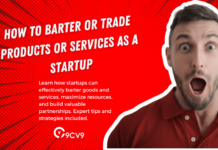



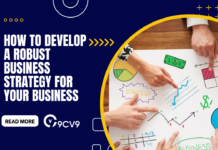
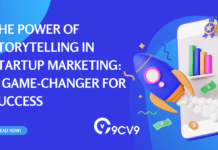





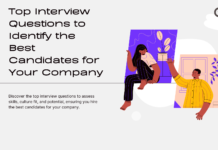
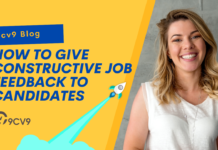

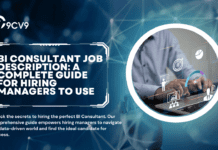


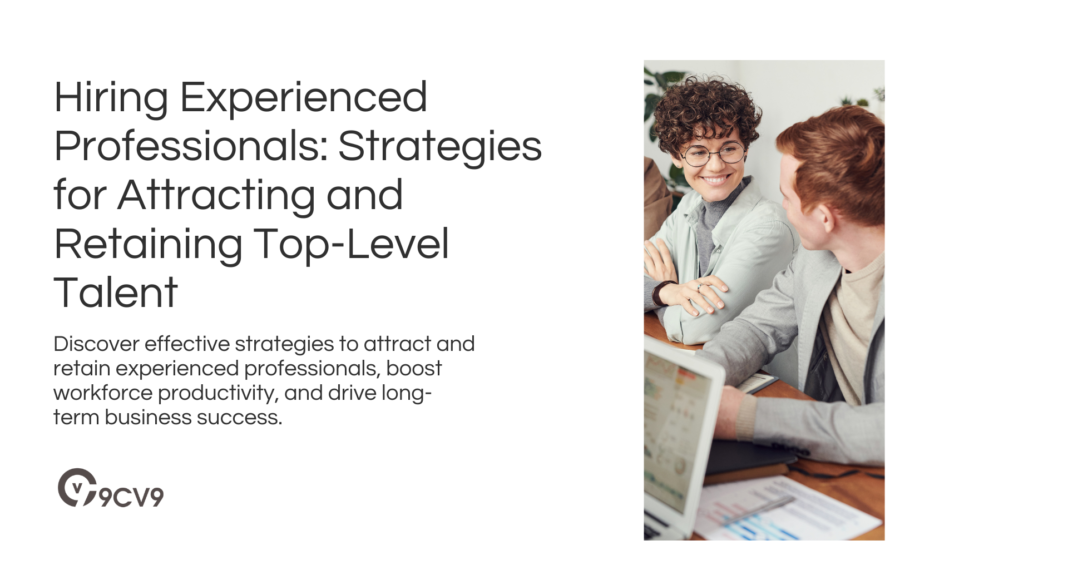


![Writing A Good CV [6 Tips To Improve Your CV] 6 Tips To Improve Your CV](https://blog.9cv9.com/wp-content/uploads/2020/06/2020-06-02-2-100x70.png)


